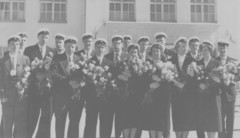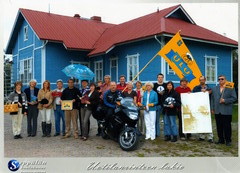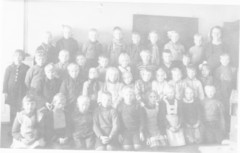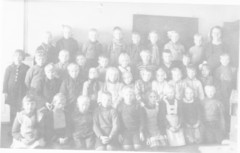ORGANISATION OF SCHOOLWORK, GRADED OR UNGRADED, the DALTON PAN, HELEN PARKHURST, GYMNASIUM, LUKIO, MODULAR CURRICULUM, PERIODICAL SCHEDULE, SCHOOL-REFORMS, PISA
A SHORT INTRODUCTION TO THE SITE
The Finnish upper secondary school of the Finnish education system has been very conservative in nature. Especially its upper part, gymnasium (called ´lukio´ which is a derivative from the verb ´lukea´ meaning to ´read´) remained about a hundred years - on broad lines - almost unchanged. I was not until in 1982 that the first real reform of the ´lukio´ was realized. It introduced two new elements, which were to prove decisively important, but only about two decades later. One concerned the structure of the curriculum, and the other was a new way of arranging the yearly working schedule.
Earlier the curriculum had been laid out on the basis of a whole school year ordaining the number of weekly lessons per each subject so that all the school weeks were exactly similar. Now the element of weekly lessons was abandoned and replaced by the number of ´courses´ in a school year. As to the working schedule, earlier there had been only one schedule for a whole school-year offering no variation during it. Now the year was divided into (e.g. five or six) periods of equal length, each of which had a working order of its own as to subjects to be studied with an added number of lessons of them.
The result was generally called a course-formed school, but, falsely, also an “ungraded” school was not all rare title in the media and among people, even among those, e.g. administrators, who should have known better. What to a large extent explains the confusion of the terms was that there had been experiments of ungraded lukio in the early 1970´s featuring courses and periods. At the time the experiments had been widely and enthusiastically reported on in the media, and so – together with ´course´ and ´period´ - also the word ´ungraded´ was propably still echoing in the media and people´s minds.
The earlier experiment in the late 1960`s and the beginning of 1970`s took place in an evening school (the Evening school of Käpylä in Helsinki) where it was difficult for mostly grown-up students adapt themselves to regular schoolwork in a fixed grade and a permanent learning group with predestined lessons. So the most empowering feature for students was found to be the student´s possibility to use an individual length of time for his studies. The invention was called variation with time. This would not have been possible, if the student had been tied to a permanent grade and group. To achieve this the organisation of schoolwork on the basis of cohorts and permanent learning groups was abandoned. The result was called an ungraded school.
The doing away with fixed grades and permanent learning groups was left out from the reform of the year 1982, either for ignorance or lack of courage. So, when the students were tied to the same group for the length of their gymnasium, nothing that was essential changed. Courses and periods as such did not change the traditional segratory academic nature of the gymnasium – thet stress, competiveness, unpracticality, concentrating shortsightedly on imminent tests, then forgetting what had been passed and looking forward to the next of studying etc. The reform was found to be a failure in a couple of years.
As the age-based permanent grades remained, no wonder the reform soon proved a failure. The traditional ills that it had been meant to cure were rather aggravated. The factual praxis and spirit remained the same and even escalated, though the number of students in the lukio had risen to around a half of the cohort – so that the ´lukio´ no more prepared for academic studies. The gravest defect was an excessive amount of obligatory courses together with the temporal rigidity of age-bound grades and almost non-existent possibilities individual choices. The situation worsened as the contents of courses, i.e., their width and exactingness, which had originally been meant to be adapted and measured so as to be taught in one period and be learned successfully enough. However due to the pressures of the various branches of the teachers´ unions led to overloading them. Another decade and another reform were needed for a real change.
About a dozen years later, after another period of experiments, in the mid1990's age-related grades and permanent teaching groups were at last abandoned – almost a quarter of a century later than it had first been thought to be possible. At the same time the obligatory component was reduced and the optional part increased. It was also very important that the structure and contents of the matriculation examination, which had traditionally dominated the timing and choices of teaching and studying, was made temporally and optionally much more flexible. Now we can say that the Finnish gymnasium had become modern, ready to meet, as a social pedagogical institution, the challenges of the more and more rapidly changing world.
Education is sure to be one of the key factors for instance in answering to challenges of developing technology and in solving problems of growing youth unemployment, , increasing immigration etc. There is an aching need for worldwide comparative surveys about the education of the teenagers of the 21st century, studies like those known as the PISA surveys about the educational levels concerning the obligatory schooling in various countries.
Two things - I think - are necessary conditions for a progressive development of education to meet the challenges of the future. The organisational division into general and vocational lines must be abolished and that the student can find his/her educational best, be it theoretical and intellectual or practical and vocational or something in between.
Hopefully the optimism und dynamics that prevailed in the Käpylä Gymnasium for Adults (Helsinki) in the 1960´s and the 1970´s in their search for better education for the youth will enliven also future aspirations for better educational systems.
+ + + + +
An Abstract of the dissertation
GRADED OR UNGRADED, SELECTION OR EMPOWERMENT
The Fight about the Limits of Flexibility and Differentiation in instruction and organisation of instruction in Finnish Gymnasiums (Note: in its European meaning: secondary school that prepares for university studies) as Part of the Reform of the Finnish Secondary School System
In the Finnish school system "lukio" (I will use the Finnish term "lukio" for the academic line in the Finnish secondary schooling, because it would be more or less misleading to adopt one of the close equivalents from the usages of other counties.) used to be the secondary part of a whole called "oppikoulu". Together with its primary part it formed the Finnish version of the European continental gymnasium in the 19th century. My research is a historical survey of this school and its traditions and a critical analysis of its pedagogical practice (some details of which are relevant also about the primary part of the Finnish "oppikoulu" before its fusion with the folks school into the obligatory comprehensive school in the 1970´s).
The attendance figures were low up to the second half of the 20th century, so that even at the beginning of the 1950´s the percentage of graduation from the "lukio" was under 5 % of the total populationl. When the living standard and the socio-economic level in Finland started to rise in the second half of the 20th century, the attendance figures began to rise fast. By the 1970s about a third of the cohort started lukio studies. The Finnish school system was not at all ready for this. It was even in theory impossible for universities and high schools to accommodate the "flood" of undergraduates. The possibilities of the vocational sector to help were restricted, because, in addition to its low social status, it was unorganized and schools lay scattered unsystematically in various parts of the country. History had overtaken the young state, which had neglected one of its most central institutions, schooling. A radical reform was acutely overdue. Nevertheless, the tide to the lukio continued, reaching about 50 % of the cohort at the beginning of the 1980s. This unbalanced situation is in the focus of the study.
In the wake of the European, mainly German gymnasium the Finnish gymnasium /"oppikoulu" was strongly influenced by the humanistic and neoclassical trend of the 19th century as a reaction against the utilitarism of the Enlightment. Its practice and didactics were largely grounded on the psycology, pedagogics and philosophy of the German philosopher J. F. Herbart. Originally this school was meant for a small elite ( 1 – 2%) aiming at academic careers or priesthood. It was strictly selective and exclusive. To be accepted to the lukio the student had to have high enough marking level in the primary stage. To be accepted to the university the student´s learning achievement was checked in the undergraduate examination.
The Finnish lukio stayed essentially unchanged well over a century, through a time of a rapid increase of the population and especially of the school attendance. It contained radical social changes both in quantity and quality. The reform of the compulsory schooling stage at the beginning of the 1970´s meant that the five primary-stage classes were united with the folks-school into a comprehensive whole. But the three secondary-stage classes, the lukio, with its elitistic and selective characteristics persisted to the end of the 20th century.
The basic factors of the lukiohad been curriculums of classical and theoretical content and herbartian didactics. All of them had cöme about in an essentially different social situation, when industrialization had hardly taken its first steps in Finland. And still In the last decades of the 20th century, when even modern was already turning into postmodern, there had been practically no reform. The classic-formalistic curriculum (Lehrplan), which had been seen as something universal, sort of above reality and opportunistic change, was certainly a firm factor in conservimg what belonged to the past. Other cornerstones of the old were the unvarying organization of school-work and its bureaucratic governance. But perhaps the highest obstacle of any reforms as to the content, method and preferences in teaching has been the overall domination of the matriculation examination.
After nearly a century of no essential change lukio was at the latest in for adapting to demands of modernization, because a huge change had taken place in the society around it. The role of lukio was no more to be a preliminary for a small elite to their more or less hereditary positions. It had become a demoratic gathering for later schooling and positions in general. And more and more students whose aims were not university or high-school studies or whose plans were unsettled or who simply wanted to keep open as many options as possible went to lukio. Instead of privileges lukio provided a route to social rise and an opportunity for social distinction. The outward symbol of the distinction, the "white cap", gained in visibility and publicity. Though officially the nature and content of pedagogics and curriculum were essentially the same, the lukio of the 1980´s was very much different from that before, say, the wars. The change was characterized - not by a new approach of educational basics, but by uncontrolled growth and a search for outward symbols of social distinction at the expense of basic knowledge and arts, i.e.basics of culture..
Not that there hadn´t been attempts to do something about the problem. The first committee (Oppikoulukomitean mietintö marraskuulta 1932) charged with pedagogic reform of the oppikoulu/gymnasium, then thought to be the main and genuine line of the Finnish school system, had published its work as early as 1932. It pondered even the possibility of adopting ungraded system to help in amending shortcomings. Its suggestions however dissolved, first for educational, professional and poltical reasons and then in wars and their afrermath. Its successor in the first part of the 1950´s collected what pieces there were, but now the scene had changed irrevocably. It abstained from making any suggestions concerning the system level contenting to make some piecemeal remarks. The same is true about The Matriculation Committee and the Gymnasium Comittee and the unofficial Shadow Committee, which worked in the 1960s. Only the Schooling Structure Committee (1969) sees the situation from the viewpoint of the whole secondary schooling after the ccompulsory omprehensive primary school would have been realized. However they are essential sources, when we want to know about the thinking of the pedagogical experts and administrators in a phase, when they realize that a reform is necessary.
The Finnish parliament had expressed as its will that like the primary school also the secondary stage should be based on comprehensive conception. The official committee called The School Committee of the Year 1971 was established to work out a proposal for the comprehensive reform of the whole of the secondary schooling in Finland in 1971. Close to this date news broke out about the experimenting of ungraded school system - the theme of the next part. The new system had been developed on private initiative and worked out in the experiments in the Käpylä Evening School. As the new system had proved workable and aroused enthusiasm and great expectations, it was generally expected to be the common denominator and the glue and oil for the unity and flexibility in the coming comprehensive secondary system of schooling, both general and vocational. However - to the astonishment of many - the committee rejected it because it was not combatible with the principle of comprehensive school, as it included a possibility of varying lengths of schooling. This proved fatal, as it meant that the vocational schooling and lukio would go their separate ways. We follow the line which led to the present ungraded lukio. The story starts in a sort of privacy far from "maddening crowds" and centres of power.
From Sysmä to Helsinki/Käpylä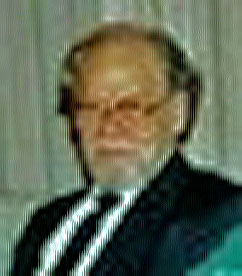
Well before there was any real stir about the reform of the oppikoulu/gymnasium in the administration, there was a spark outside the centres of power that started a process that from a modest beginning grew in about half a century into a historical reform. The final focus was to be the reform of the Finnish "lukio", but it had wider repercussions. The start took place in a small gymnasium in a small provincial town of Sysmä in 1949. Touko Voutilainen (born in 1918), whose studies had been delayed by the war years (1939/40 and 1941/45) was elected headmaster of the Sysmä gymnasium at the age of thirtyone. This creative and innovative man, who had the opportunity to start his career only now that he was over thirty, began by challenging a primordial usage in one of the most conservative national institutions.
Periods march in
As headmaster Voutilainen´s first task was to organize the coming school year. So right at the start the piecemeal and discontinuing character of the traditional school made him think. The curriculum that consisted of one or more lessons per subject per week was traditionally organizeded into a week schedule, in which the lessons were haphasard like on a motley cloth. Every single week of the school-year was similar. No one sensible would plan and arrange work like that, he wrote later. So he wanted to do something about that. The school acquired an official permission to experiment with a different organisation. The school year was divided into periods, each with a different schedule. The school subjects were distributed into periods according to a kind of on/off-principle: when ON, the number of lessons was increased, for instance doubled, when OFF, the number of lessons was null. This lessened the incoherence and scatteration and some amount of concentration of teaching became possible. Seen from now, the move doesn´t seem very extraordinary, but one should notice that at the time it was a breach in a long tradition thought to be little short of eternal, and, without a doubt, this innovation was bound to arouse a new kind of educational thinking and practice. This was to lead to the reform of the Finnish lukio and to a new way of seeing school work and conditions of learning in general.
And then courses
The experiment lasted only for one year, as its leader, Voutilainen left Sysmä and moved to Helsinki. In 1956 he, with some friends of his, started a new kind of school (Helsingin yhtenäiskoulu), which was special in the sense that it included all the stages from elementary to matriculation exam. Together with the period system this "union" of the stages was another step to diminish the diffusion of schooling. The "union of stages" widened further, when In 1962 an evening school was annexed to it. Voutilainen started as headmaster in the former and then moved to the latter, which obviously offered new challeges on the way he was advancing.
The special feature of an evening school was that students were adults. Consequently their studying and learning experiences, abilities and goals varied widely as well as their living situations. The same program at the same collective pace in a permanent group was very unsuitable for many, because if you belong ed to a certain grade and a permanet group with a fixed program, it was naturally hard and often impossible to keep abreast. In other words graded school was not for them.The first attempt to solve the problem in Käpylä was an experiment called “the Speed Line". It was a compressed program of two years to do the 3-year gymnasium examination. When the result was not good, the staff looked for a different solution.
And finally ungraded
When learning goals and materials were adapted to fit the frames of a period, the evident unity between a period of lessons and the content to be learned led to seeing there a whole, i.e. a course. So the next step was that the curriculum was written on the basis of courses of fixed length instead of a number of weekly lessons. The individuality of course was emphasized by giving each course a name descriptive of its content. Instead of of permanent groups and its collective workplan, there was a tray of courses, and the students were invited to choose and to plan their studying programs themselves. There was no permanent grouping anymore. Own choices were not only be possible, they were required. This meant that the graded system was done away with, it was not only possible, but a reality that occasionaly a beginner and some one finishing belonged the same group.
The courses as separate units could be timed, repeated etc. and various pedagogical and personal needs, goals, demands etc.could be taken into account Only if the student was disengaged from his or her age-cohort (grade) and freed from belonging to any permanent group, one could make individual choices and have a possibility of optimizing one´s duration and quality of studies. The emancipation from the confinement to predestined cohorts and classes together with periodical organisation of schoolwork and course-structure of curriculum were what was needed for ungradedness. The three grades of the Finnish lukio/gymnasium were wiped over in the Ungraded Lukio Experiment. It proved a success.
Thanks to the idea of courses school appeared now in a new light. The traditional presupposition had been that school is what it is. Students advance on the same route in the same pace and are measured with the same standard. Those who retard are left to wait for a later train - or to go to other pastures. It was believed that the same content, duration, methods, criteria etc. fulfilled the principles of demoracy and the ideal of equality. Any idea that there might be an alternative was a rare thought, and It was far from common knowledge that the prevailing conception had taken root in a time, when the function of school had really been to select the fit and to discard the unfit. It is true that around the turn of the 19th and 20th centuries the Progressive Education movement tried to promote more liberal approaches, but its voice was not heard too well and the movement had lost its momentum already before the World War II. It was only during the second half of the 20th century that a new vision of school started to reach wider public notice. This was part of other fundamental social changes and more liberal atmoshere in general. The idea that the function of school was to empower, not to discriminate started to get foothold. The procedure of the same at the same pace in the same measure was more often challenged. Instead the idea that because people differ in their mental capabilities, interests and motivation, learning capabilities, in how they learn, in their maturing pace and so on, school must offer variation and be resilient.
The student´s possibility to regulate the time-dimension of his or her studies is the most remarkable and the most characteristic feature of the ungraded system. So, the staff at Käpylä coined variation with time as a "trademark" for the new system, which had evolved feature by feature during more than twenty years. It had proceeded relatively unnoticed and without any wide publicity, it had been done for a cause, not for show. In every phase a step further had been a result of innovative solution of a real problem. That is at least partly why there was genuine freshness and inventiveness in the activity at Käpylä. And most important of all, the innovations had feasibility, because the system was developed in the immediate everyday practice of the schools. When the official Experiment of Ungraded Gymnasium ended in 1972, the result was relatively clear-cut and ready to be used, needing only some further refining, for instance studying rules in a system essentially different from the preceding. Anyway there was an ungraded system to take, for instance to solve the fundamental defects in the traditional gymnasium instruction and to level its undemocratic functions.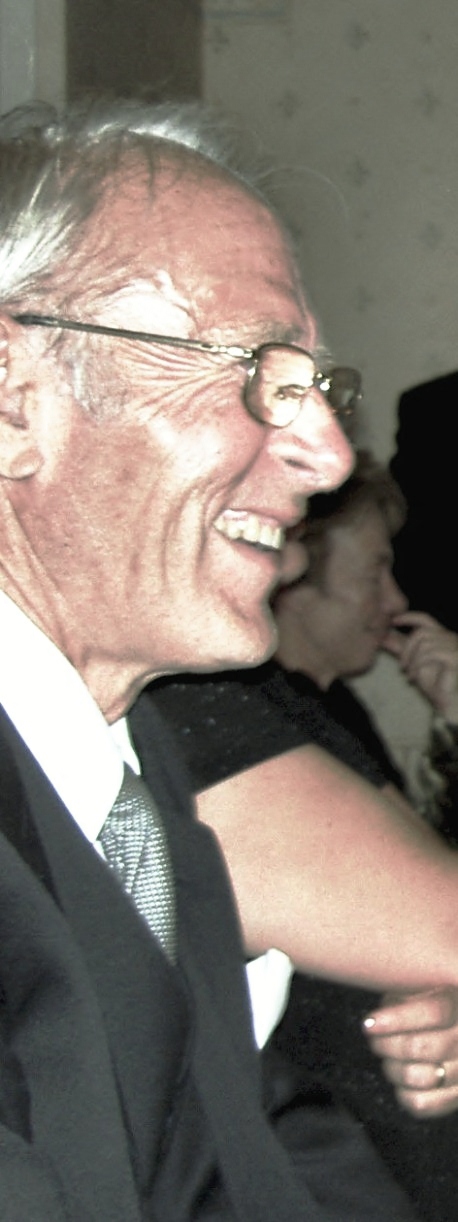
So far, so good
So far the winds had been favourable, but as soon as the new system became part of national , schooling policy, problems appeared. The new system had worked in an evening school, but would an ungraded systen work also in day-schools? To get an answer In 1972 two experiments were started, one in Mäkelänrinteen yhteiskoulu and the other in Alppilan yhteislyseo. The former school was eager to get the new strategy, and its headmaster Rainer Pelkonen (born 1928) and teachers had been interested in the experiments already for some years, the school had even applied to the Department of Public Education to be allowed to adopt some of its features in advance. However the school had to wait for the experiment to begin, but from that on it has been ungraded. ( Rainer Pelkonen is beside Touko Voutilainen one of the leading developers of the Finnish ungraded lukio.The Mäkelänrinteen lukio has contributed many important additions to ungraded system, and it has long been one of the leading schools in Finland.)
Unfortunately the first experiment year in Alppila was a failure. The reason was an insufficient preparation and unrealistic expectations. The teachers had not had enough time to acquaint themselves with the new system and clearly did not understand how widely it differed from the traditional school. The fact that any new system requires good preparation and especially ungraded system, which is more demanding than graded system in that few things are automatic, but require own activity. However the school gave the pupils almost complete freedom to choose right in the beginning. The staff was unable to handle the situation, and the consequence was nearly a disaster, a quick "normalization" and the resignation of the headmaster. The school informed that there would no more be "any variation of time" and that the aim would be three grades in three years and that free choices would be allowed only in peripherial subjects. The case of Alppila gave a sign that under the name of ungradedness it is allright to remain practically graded. However, there was little harm done at the time, because the ungradedness of day-schools was soon dropped altogether by the resolution of the government, as we shall see later on. ((The new system was however acceptable in evening schools, and in about a decade practically all of them were ungraded.)
Enter politicians
The realization of the reform of the compulsory primary stage began in 1972. It meant that in five years the first students from the new comprehensive primary would knock on the doors of the secondary stage schools, and all of them would would be eligible to continue in the secondary schooling of their choice. The Schooling Committee had been set in 1971, and its proposal was published in 1973. The central idea in it was that general and vocational schooling should be united into a comprehensive whole, "the school of the youth", which would contain twelve sectors. One of them would have been general and the others vocational. The length of every sector was to be the same: two years. That was, because the committee believed that, if the length of the sectors varied, a longer education would give an advantage in comparison with shorter sectors. The committee declared that the compulsory stage of education must not create formally unequal positions. It would be contradictory to the principle of equality, which the parliament had set as the topmost principle of the reform. On the whole ”lukio” with its three grades and dominant undergraduate examination was wholly uncombatible with the conception of the committee. It would be replaced by one of the sectors, the sector of general education. With these premises the committee naturally rejected ungraded system with its idea of “variation with time”.
The proposal meant that there should be no “lukio” any more and no undergraduate examination, no high brow “white caps” in springs. The rejection of ungraded system was a surprise to many, a disappointment to some and a mere word to most, while the threat of the abolition of the traditional “lukio” hit the heart of the national culture. There broke out a hectic battle between the pro-lukio movement and the supporters of the committee´s suggestion.
“A reform”
The government solved the question of “lukio” or no “lukio” pragmatically. In its resolution of 1974 it ruled that “lukio” and the professional schooling should remain separate and be developed as separate. The comprehensive flexible united secondary stage that had been dreamed of in the late 1960´s and early 1970´s was a remote memory. About the "lukio" the resolution determined that it was to be graded 3-year school and that it was to be developed as such. There had been no event in the century-long history of the Finnish "lukio" that could be called a reform. But now following the resolution of the government a politically representative commission concentrated on the fundamental principles of the gymnasium pedagogics and curriculum, but the "reform" in 1982 was purely pragmatic and had little to do with the paper. It was rather an attempt to revive the traditional “lukio” in disguise of two elements borrowed from the ungraded system: periods and courses. The most dominant feature was a revised curriculum that was heavier that ever before and a periodical marking system that occupied a central role, causing stress in students and labour for teachers, governance and headmasters. The overall frame was a graded whole of three years.
In an evening school the attitude to grades used to be liberal, even though school was formally graded, so that belonging to a ceratin grade was more or less a formality. But in a day school especially in "lukio", this was not so. You had to do and pass courses to pass grades, and if you failed, you could not proceed. There was no room for individual timing, planning, flexibility, repetitions, monitoring and so on. The graded course-based system was full of doing what was prescribed in common pace with your grade and home group. So it is no wonder this reform proved a failure. It aroused a lot of criticism the common denominator of which was that it was too heavy, contained too much compulsory and too little optional content, courses were overloaded and forced to direct an overload of energy on tests and marking, especially as the marks received at the end of each course were part of the finishing marking. This was a cause of acute stress
Ungraded system revisited
The graded, course-formed gymnasium was a hybrid that worsened the earlier ills. The selective academic nature became even more marked and stress intensified. Hasty, listing, superficial teaching was accompanied by cramming reading of students. The monolithic nature of the curriculum made the organization of instruction even more rigid. Tests at the end of every period directed attention to marking and intensified competitive atmosphere. This failure turned the attention again ungraded system. Preparations for a new experimentation were started in 1984, about a decade after the government had shelved the system. However before this happened, two day-school experiments had started. Two models were inherited from them. First, Mäkelänrinne followed and realized what had been developed in the Käpylä experiments proving that the new system worked and produced excellent outcome. Second, there was the Alppila model, which was a result of a failure. This was because in the Alppila experiment they lost control of the new system and the grades and permanent grouping had to be returned. The experiment continued and only some outward features reminded of a new system. Unfortunately it gave a sign that ungraded need not be ungraded. It has been an excuse for numerous schools to introduce themselves as ungraded, though in reality they have been much more graded than ungraded.
This ambivalence has created a lot of confusion, in addition to schools and the public even to the administration. To distinguish between the lines it has been suggested that pretended ungradedness could be called "graded ungraded" and real ungradedness ungraded ungraded.
The second attempt to introduce ungraded system to the Finnish school scene started in six "lukios" in 1987. There was no definition or agreed idea of ungraded system, only the reports of the experiments in the Käpylä evening school and two different models from day schools, those of Mäkelänrinne and Alppila. So even now no one knew exactly what it was that would be experimented. Finnish "lukios" differ in many ways, most markedly in size, and the lack of a definition allowed many-coloured versions. Anyway there were two main approaches - with innumerable variations - that were at odds: one with a true pedagogic idealism and another that looked for compromises between the old and the new. Most schools were content with a system in which permanent grouping and grades remained, more or less masked. No masks could not hide the fact that the teaching arrangements aimed at the matriculation in the spring of the third year, which might be the toughest tradition to break.
In an idealized case the starting point might have been the hypothesis that a genuine ungraded system and the pedagogic philosophy, on which it is based, would be the best guarantee that the known ills of the traditional school would diminish andthe outcome be better. Then the most crucial determinants would be the dismission of grading and permanent grouping. This would mean that a student would lose the support of a group and every one would have to decide for oneself. The student´s personal participation in planning and timing ("variation of time") and a followup of them would be essential. Sufficient personal guidance would be necessary and should be handy.
The former approach is easy, as it differs very lttle from the traditional. The other is demanding and laborious, for example because it requires special attention and added contribution, not only from administration and teachers, but also from students and even parents. So it is no wonder that the Alppila model has been much more popular than the really ungraded. In the simple approach some new details, which would have been impossible in a graded system, have become part and parcel of every gymnasium, for instance another time of a course. But the fact that a purposeful lengthening/shortening of traditional studying time is rare, shows that the final dismission of grades is rare. The traditional is present and pendant all the time ready to overrun anything deviating too far. This is another indication that the Finnish "lukio" belongs to the institutions of "long durée" such as for example "culture" and "nationality ". (conf. Braudell) Their characteristic is very slow change, something that is measured in generations..
Reforming an institution of permanent durability
The reform of "lukio" in the mid 1990´s was curtailed in regard to original goals. The gravest obstacles impeding change in the instructional scheme and schedule of Finnish gymnasium appear to be deep-rooted fixations that are inseparably connected with the conventions of the Finnish matriculation examination. The most rigid tradition is that you must have your studies finished early in the second half of your third school-year. This temporal predestination will lead inescapably to the traditional passing through the gymnasium. A real reform must be accompanied by a change in attitudes and thinking. The student needs to be ready, when he is called upon to make decisions about his or her own studying: the content, aims and duration. This is asking a lot, so the usiness slips onto the traditional line - with ready-made permanent groups and programs. The alternative is not impossible. This is shown in a few instances. A genuine doing away with fixed classes, an "ungraded ungraded" system is outlined toward the end of the research.
Anyway somehow the normative sameness of content and duration of studies should be tuned more varied. The necessity arises from the fact that the levels of learning achievement, readiness to learn and the motivation of the youngsters starting gymnasium or secondary schooling have become more varied from ambitious to laissez faire. In instruction the traditional linearity, in which it is supposed that all learners master what has been passed is harmful, because that is not the case. If the bottom miscarries, and you add new material on what is failing, there will necessarily be dropouts. The linearity of instruction has been destructive for the lives of many peopler, and the problem will worsen now that the heterogeneity, following the growth of the number of students, has enlarged.
Notes referring to some themes in the research
The instruction of a course should be as self-dependent as possible, and as such be fitted into the epistemological and ethical level of those being taught. The most crucial aim should be to arouse an interest to know.
The educational system of a society is one of its most central institutions. Any educational system is not only what it is rationally planned to be. It is influenced by general social dynamics and it has social functions that are not intended. Before any real change in the practice and ideology of school can take place, the unintended functions, the "hidden curriculum" that bypasses the official one, must be made visible. The features of education explored in this research seem to belong to the sphere of ´la longue dureé´, the historical deep-structure defined by Fernand Braudel, a French historian. In this historical sphere changes are characteristically very slow, hardly noticeable.
The most important question in regard to secondary education is how its nature and social role will develop. Unavoidably it will develop in some direction in a world of more and more of sophisticated technology and overall and aggressive business and globalization. Will the secondary education, as its primary function, serve the selective needs of a commercial and competetive society? Or would it be possible for education to grow into a democratic and empowering force, the basic function of which it would be to ensure everyone's active integration into one's community and an access to and participation in the world of knowledge and culture?
No doubt the selective function in Finland has changed now, when about half of the cohort passes the matriculation examination. It may be more refined and masked. Maybe that is one of the reasons, why attempts to bring gymnasium and vocational schooling closer to each other or even under the same cover have failed. The need for an institutionalized mechanism of social distinction is still strong enough, especially as it is not generally recognized as such. Naturally parents hope their offspring will walk on the sunny side, and it is no wonder the young themselves see the white cap as a sign of being accepted into the upper story. It is very doubtful, whether gymnasium has succeeded in empowering people in democratic spirit, its official pedagogic goal.
But the old conception has not died out. And there are more and more features in the economic and technological development that increase cmpetition. This brings with it demands that competitiveness should be all right in schools and that schools should be selective. The democratic and human values of modern society demand that its institutions see their citizens as equals and give them equal opportunities, even go in for positive distinctions in the sense that those whose basic conditions are worse get more material and intellectual contributions to bring them to the line
KEYWORDS
SCHOOL, GYMNASIUM, LUKIO, SOCIAL INSTITUTIONS, TRADITION, TRADITIONAL, PHILOSOPHY OF EDUCATION, HUMAN LEARNING, SOCIAL LEARNING, INDIVIDUAL LEARNING, SELECTION, SEGREGATION, EMPOWERING, DIFFERENTIATING EDUCATION, COGNITION, CONDITIONS OF LEARNING AND COGNITION, CONCENTRATED/DISCONNECTED TEACHING, SECONDARY SCHOOLING, VOCATIONAL SCHOOLING, GENERAL SCHOOLING, FINNISH SECONDARY SCHOOLING, GRADED SCHOOL SYSTEM, SCHOOL GRADED BY AGE/YEAR, PERMANENT GROUPING, UNGRADED SCHOOL SYSTEM, NON-PERMANENT GROUPING, FINNISH UNGRADED LUKIO, CURRICULUM, MODULAR CURRICULUM, PERIODICAL SCHEDULE, FINNISH LUKIO, FINNISH GRADED AND UNGRADED LUKIO, MODULAR CURRICULUM, PERIODICAL SCHEDULE, HIDDEN CURRICULUM.
AVAINSANAT
LUKIO. LUOKATON LUKIO, GYMNASIUM, SOSIAALINEN INSTITUUTIO, PERINNE, YKSILÖLLINEN OPPIMINEN, SOSIAALINEN OPPIMINEN, VUOSILUOKKIIN JAETTU KOULU, PYSYVIIN OPETUSRYHMIIN JAETTU OPETUS, LUOKATON OPETUSJÄRJESTELMÄ, VUOSILUOKKIIN JAETTU KOULU, TOISEN ASTEEN KOULUTUS, SUOMEN TOISEN ASTEEN KOULUTUS, YLEISSIVISTÄVÄ, AMMATILLINEN KOULUTUS, KURSSIMUOTOINEN (MODULAARINEN) OPETUSSUUNNITELMA, PIILO-OPETUSSUUNNITELMA, HAJAUTETTU LUKUJÄRJESTYS, JAKSOJÄRJESTELMÄ, OPETUKSEN KESKITTÄMINEN, YLIOPPILASTUTKINTO, KOEVIIKKO
|




